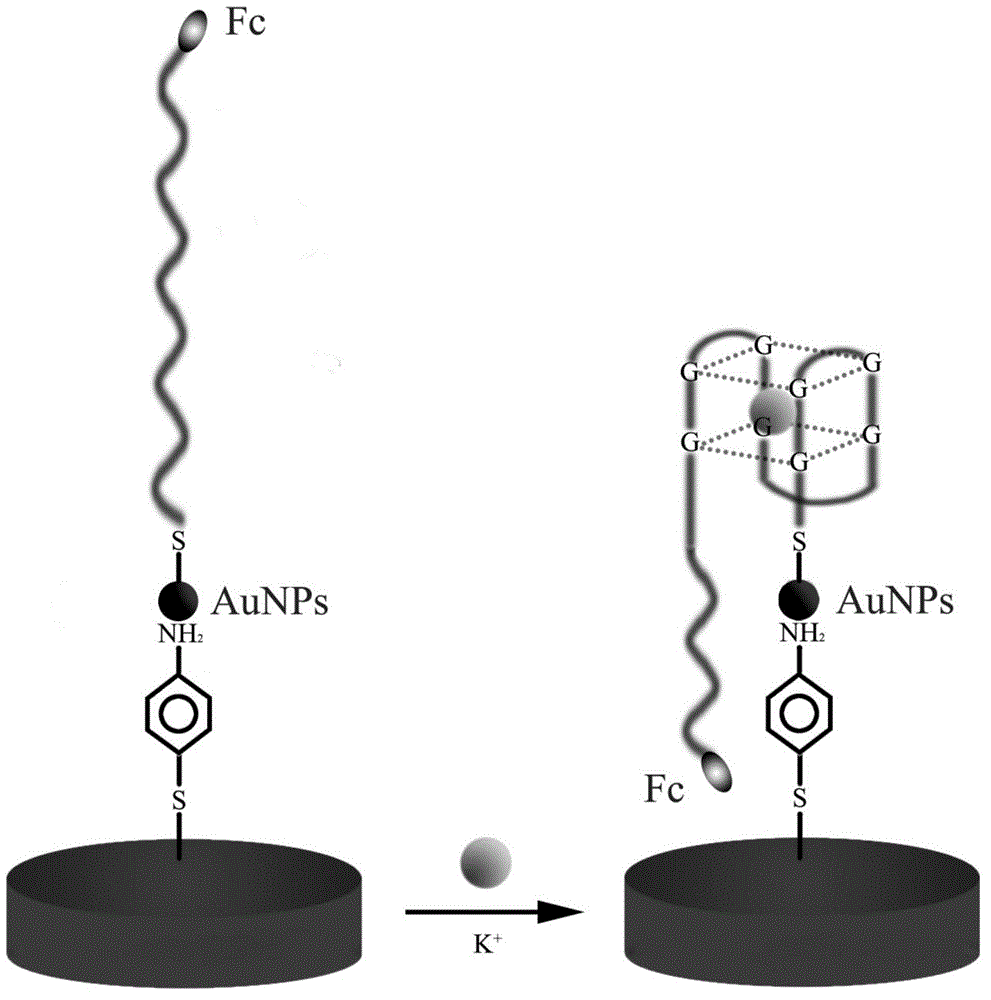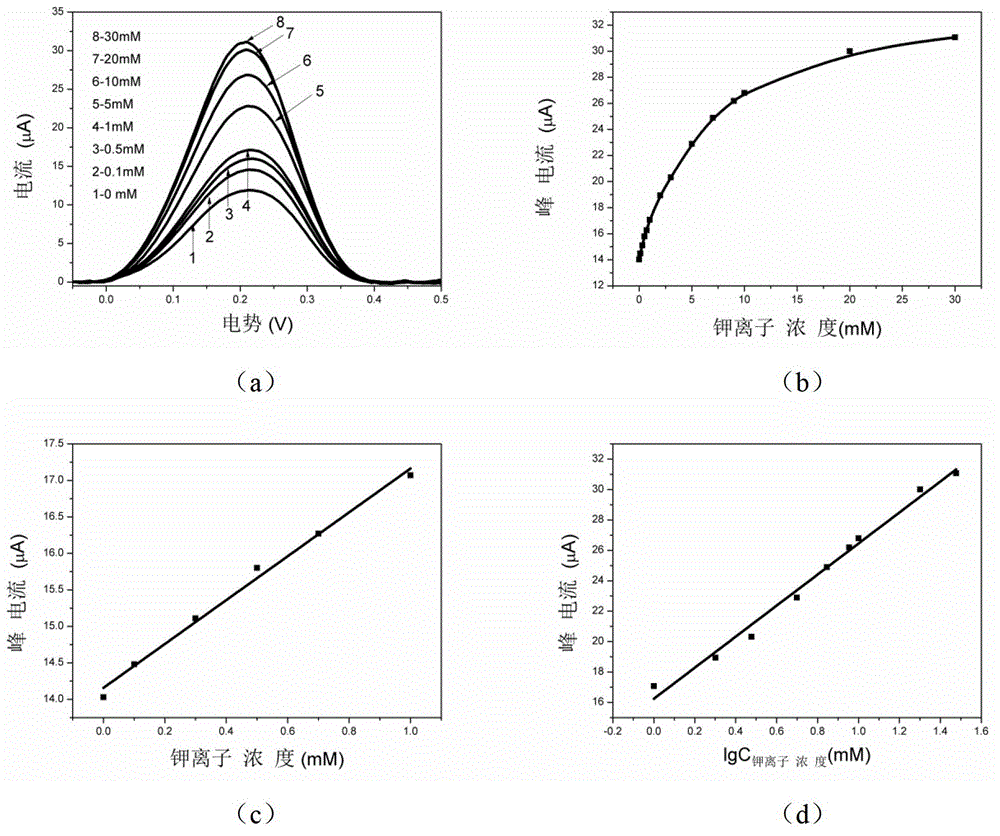Method for detecting potassium ion by preparing biosensor based on G-quadruplex and gold nanoparticle
A technology of gold nanoparticles and biosensors, which is applied in the field of biosensors, can solve problems such as narrow detection range, and achieve fast detection speed, high sensitivity, and real-time detection effects
- Summary
- Abstract
- Description
- Claims
- Application Information
AI Technical Summary
Problems solved by technology
Method used
Image
Examples
Embodiment 1
[0022] The first step: pretreatment of gold electrodes:
[0023] (1) Immerse the gold electrode in concentrated H at a volume ratio of 3:1 at 70°C 2 SO 4 and H 2 o 2 Composed solution (piranha) for 5 minutes, then rinse with plenty of secondary water. The H 2 o 2 The quality score is 30%.
[0024] (2) The gold electrode should be polished on the polishing cloth continuously with 1.0μm, 0.3μm and 0.05μm alumina powder respectively.
[0025] (3) Clean the gold electrode ultrasonically in ethanol and secondary water: 1 minute in ethanol and 2 minutes in secondary water.
[0026] (4) The gold electrode is placed in 0.5mol L -1 H 2 SO 4 In solution, a cyclic voltammetry scan was performed between -0.2 and +1.6 V until a typical cyclic voltammetry spectrum was obtained, and a clean gold electrode was obtained.
[0027] The second step: the preparation of p-aminothiophenol (p-ATP): use absolute ethanol as a solvent, add p-ATP to the solvent to obtain an ethanol solution co...
Embodiment 2
[0037] The first step: pretreatment of the gold electrode: the pretreatment process is the same as in Example 1.
[0038] The second step: the preparation of p-aminothiophenol (p-ATP): use absolute ethanol as a solvent, add p-ATP to the solvent to obtain an ethanol solution containing 8mM p-ATP, and prepare the ethanol solution before use , Sealed and stored to prevent the liquid from evaporating.
[0039] The third step: modify p-ATP on the gold electrode;
[0040] Soak the gold electrode treated in the first step in 8mM p-ATP ethanol solution and place it at room temperature for 24 hours. Then rinse with ethanol and deionized water, and blow dry with nitrogen.
[0041] The fourth step: modifying gold nanoparticles on the electrode modified with p-ATP: add the prepared 13nm gold nanoparticle sol dropwise to the surface of the gold electrode modified with p-ATP, and leave it at room temperature for 10 hours until the electrode surface The gold nanoparticle sol almost dries ou...
Embodiment 3
[0048] The first step: pretreatment of gold electrodes:
[0049] With embodiment 1.
[0050] The second step: the preparation of p-aminothiophenol (p-ATP): use absolute ethanol as a solvent, add p-ATP to the solvent to obtain an ethanol solution containing 12mM p-ATP, and prepare the ethanol solution before use , Sealed and stored to prevent the liquid from evaporating.
[0051] Step 3: Modify p-ATP on the gold electrode:
[0052] Soak the gold electrode treated in the first step in 12mM p-ATP ethanol solution and place it at room temperature for 24 hours. Then rinse with ethanol and deionized water, and blow dry with nitrogen.
[0053] The fourth step: modifying gold nanoparticles on the electrode modified with p-ATP: add the prepared 17nm gold nanoparticle sol dropwise to the surface of the gold electrode modified with p-ATP, and place it at room temperature for 24 hours until the electrode surface The gold nanoparticle sol almost dries out. Rinse with water and blow dr...
PUM
| Property | Measurement | Unit |
|---|---|---|
| diameter | aaaaa | aaaaa |
Abstract
Description
Claims
Application Information
 Login to View More
Login to View More - R&D Engineer
- R&D Manager
- IP Professional
- Industry Leading Data Capabilities
- Powerful AI technology
- Patent DNA Extraction
Browse by: Latest US Patents, China's latest patents, Technical Efficacy Thesaurus, Application Domain, Technology Topic, Popular Technical Reports.
© 2024 PatSnap. All rights reserved.Legal|Privacy policy|Modern Slavery Act Transparency Statement|Sitemap|About US| Contact US: help@patsnap.com









